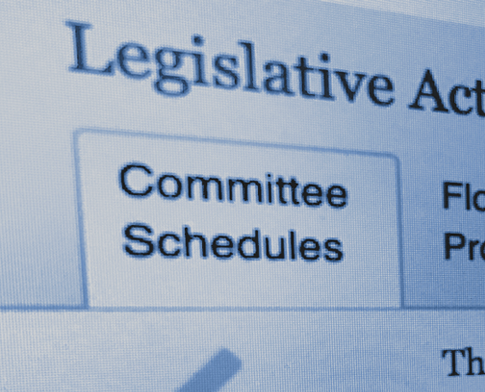Health Update (September 28)
| Today (September 28th), President Trump signed the Labor-HHS-Education/Defense spending package, avoiding a government shutdown at the end of this month. As reported last week, the bill contains a continuing resolution to fund any government expenditures not appropriated by September 30th, setting a new funding deadline of December 7th. The bill was signed in a small ceremony at the White House.[i]
Opioids Package In a bipartisan, bicameral press release, health leaders in several committees outlined the agreement between the House-passed H.R. 6, the SUPPORT for Patients and Communities Act, and the Senate-passed Opioid Crisis Response Act of 2018. “After months of bipartisan work by 8 committees in the House and 5 committees in the Senate, we are announcing an agreement on sweeping legislation to combat the opioid crisis,” the press release read.[ii] Republicans and Democrats in tough reelection bids can now champion their work securing billions of dollars for a response to the opioid crisis while on the campaign trail (the House recessed today until after the November elections). Many Democrats, while supportive of the measure as a whole, said that more work needs to be done (mainly in the form of more funding). While the spending agreement between the House and Senate will increase opioid-related funding to $3.8 billion this year, some senators have advocated for as much as $100 billion in increased spending over the next decade.[iii] On Friday, the House did its part to pass the final agreement with the Senate. In an overwhelming 393-8 vote, the lower chamber sent the legislation to the Senate, marking the last stop before arriving on President Trump’s desk. There are several specific health considerations detailed in the agreement. The final bill includes expanded access to Institutes of Mental Disease, which would allow states to bypass the 16-bed restriction on using Medicaid dollars for mental health treatment. Notably, the IMD inclusion applies to all substance abuse disorders—the House-passed language only included language for opioid or cocaine abuse. Language addressing the Medicare Part D coverage gap, otherwise known as the “donut hole,” was absent from the agreement—some commentators speculate that lawmakers did not want to give the appearance of helping drug companies with opioids legislation.[iv] Language from the Overdose Prevention and Patient Safety (OPPS) Act, which would have enacted 42 CFR Part 2 reform, was not included in the final agreement.[v] Proponents of reform advocate for removing certain restrictions on the ability to share health records regarding substance abuse disorders. Critics of reform voiced concerns that such legislation would put the privacy of patients at risk. Further commentary and analysis on the agreement can be found here. A section-by-section discussion of the agreement can be read here, courtesy of the House Energy and Commerce Committee. The full text of the final legislation can be read here. Also this week, the Department of Health and Human Services (HHS) awarded $50 million in grants to combat the opioid epidemic among American Indian and Alaska Native tribes. The Tribal Opioid Response grant program seeks to increase access to FDA-approved medical treatment in tribal communities while remaining culturally sensitive and appropriate. “We will continue to engage with tribal nations through the Secretary’s Tribal Advisory Committee and community visits to hear concerns and develop programs that build on the strengths of tribal culture and customs,” said HHS Deputy Secretary Eric Hargan.[vi]
Medicare Advantage Premiums In a 2019 projection from the Centers for Medicare and Medicaid Services (CMS), it is estimated that premiums for Medicare Advantage monthly premiums will decline by $1.81 to $28.00, a decrease of roughly 6%. Enrollment in Medicare Advantage, meanwhile, is expected to grow to 22.6 million beneficiaries, which represents an increase in 11.5%. The full projection from CMS can be read here.[vii]
Maternal Health Hearing It was alarming for members of the House Energy and Commerce Committee to learn this week that the United States has seen a drastic increase in maternal mortality rates since the turn of the century, with the maternal mortality rate in 1999 at 7.2 deaths per 100,000 live births compared to 18 deaths per 100,000 live births in 2014. The witnesses and committee expressed bipartisan support for H.R. 1318, entitled “Preventing Maternal Deaths Act of 2018,” which directs the Department of Health and Human Services (HHS) to establish a program under which HHS may make grants to states for the purpose of the following: (1) reviewing pregnancy-related and pregnancy-associated deaths (maternal deaths); (2) establishing and sustaining a maternal mortality review committee to review relevant information; (3) ensuring that the state departments of health develop a plan for ongoing healthcare provider education in order to improve the quality of maternal care, disseminate findings, and implement recommendations; (4) disseminating a case abstraction form to aid information collection for HHS review and preserve its uniformity; and (5) providing for the public disclosure of information in state reports. All witnesses stated that standardized data needs to be implemented to allow states to combat these maternal deaths in the areas needed most, along with the need for implementation of Maternal Mortality Review Committees (MMRC’s). One witness shared a particularly powerful testimony about his experience losing his wife due to hospital negligence and how this is an issue that can be extremely difficult to combat, a sentiment that Chairman Burgess shared from his previous medical experience. Ultimately, the standardized data sets need to be implemented to combat this issue. The committee hopes to pass this legislation before year’s end.
[i] Sarah Westwood and Maegan Vazquez. “Trump signs bill to avoid government shutdown.” CNN, 28 Sept 2018. https://www.cnn.com/2018/09/28/politics/donald-trump-appropriations-bill-government-shutdown/index.html [ii] Katie Niederee and Nicole Hager. “Bipartisan Committee Leaders Announce Opioid Legislation Agreement.” Senate Committee on Finance, 25 Sept 2018. https://www.finance.senate.gov/chairmans-news/bipartisan-committee-leaders-announce-opioid-legislation-agreement [iii] Peter Sullivan. “House Overwhelmingly passes bill to fight opioid crisis.” The Hill, 28 Sept 2018. https://thehill.com/policy/healthcare/408968-house-overwhelmingly-passes-bill-to-fight-opioid-crisis [iv] Eric Assaraf. “Opioids: Final bill includes IMD; Pass-through pay for non-opioids left out.” Cowen Washington Research Group, 26 Sept 2018. https://cowen.bluematrix.com/sellside/EmailDocViewer?encrypt=d64db1b3-5379-4f8f-b49b-cdd3423d78d9&mime=pdf&co=cowen&id=bsutter@caphillgrp.com&source=mail [v] Jennifer Stoll. “OCHIN Deeply Disappointed Over Omission of 42 CFR Part 2 Reform in Opioid Package.” Longview News-Journal, 27 Sept 2018. https://www.news-journal.com/ap/national/ochin-deeply-disappointed-over-omission-of-cfr-part-reform-in/article_8cfbd94b-0911-54bd-9ae1-5dbbc0e62e77.html [vi] “HHS awards $50 million to assist American Indian and Alaska Native tribal efforts combating the opioid overdose epidemic.” HHS, 26 Sept 2018. https://www.hhs.gov/about/news/2018/09/26/hhs-awards-50-million-assist-american-indian-and-alaska-native-tribal-efforts-combating-opioid-overdose-epidemic.html [vii] “2019 Medicare Advantage and Part D Prescription Drug Program Landscape.” CMS, 28 Sept 2018. https://www.cms.gov/newsroom/fact-sheets/2019-medicare-advantage-and-part-d-prescription-drug-program-landscape |
HOUSE.GOV
The Week Ahead
For the main events of the next week and more, go straight to the key events on the house.gov website.
SENATE.GOV
The Week Ahead
For the main events of the next week and more, go straight to the key events on the senate.gov website.


